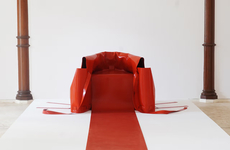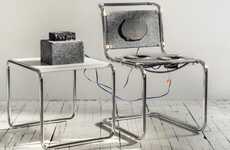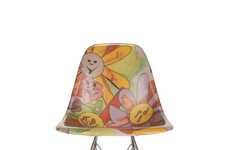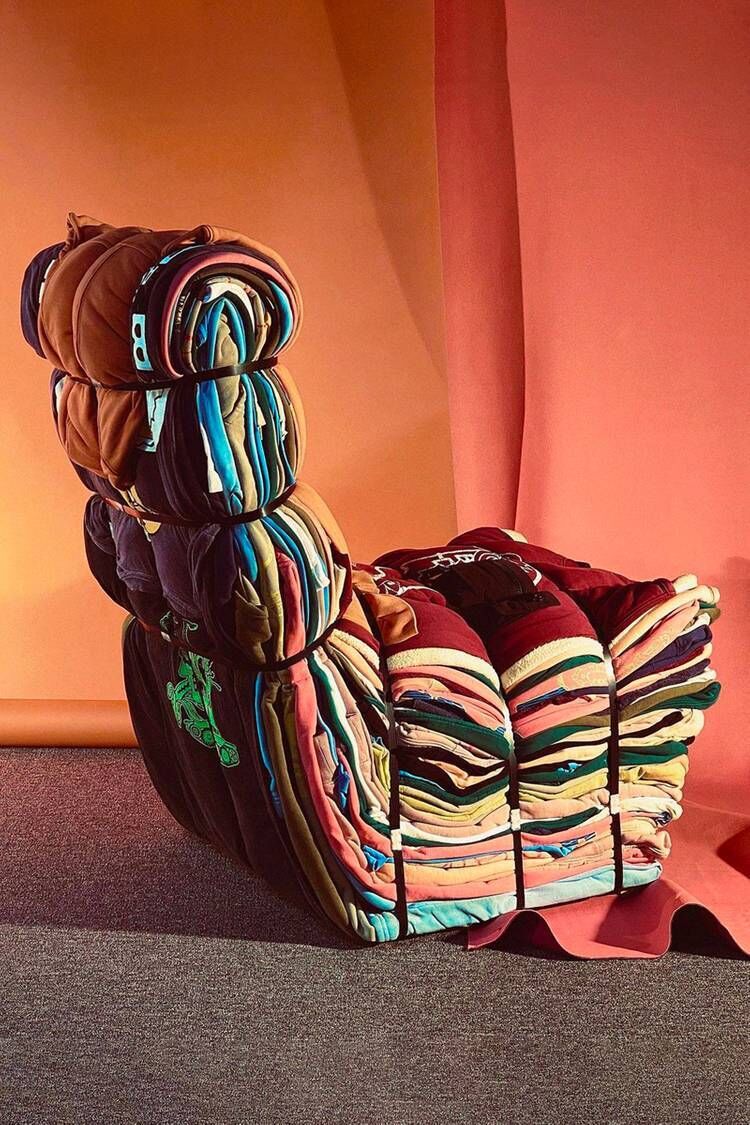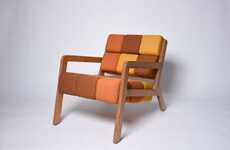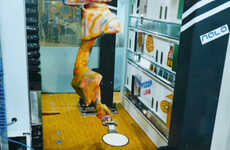
Brain Dead's Rag Chair Takes the Spotlight at Milan Design Week
Brain Dead works in collaboration with Amsterdam-based design studio Droog on a special iteration of the iconic Rag Chair. This furniture piece is constructed using leftover sample silhouettes, flawed items, or just other thrown-away fabric. It was originally made back in 1993 by Gijs Bakker and Renny Ramakers.
The studio itself often stems from a sustainable design language, doing so by finding upcycled ways to reuse everyday objects into playful new creations. This chair was originally showcased at Milan Design Week in 1993, full of sustainable angles and upcycled solutions. This latest iteration is made possible with the construction of 50 sweaters, shorts, tees, and additional items from the London streetwear imprint. It is showcased at this year's Milan Design Week until June 6th.
Image Credit: Brain Dead, Paul Kooiker, Droog, Tejo Remy
The studio itself often stems from a sustainable design language, doing so by finding upcycled ways to reuse everyday objects into playful new creations. This chair was originally showcased at Milan Design Week in 1993, full of sustainable angles and upcycled solutions. This latest iteration is made possible with the construction of 50 sweaters, shorts, tees, and additional items from the London streetwear imprint. It is showcased at this year's Milan Design Week until June 6th.
Image Credit: Brain Dead, Paul Kooiker, Droog, Tejo Remy
Trend Themes
1. Upcycled Furniture - More furniture designers can create furniture using leftover samples, flawed items, or other thrown-away materials to reduce waste and promote sustainability.
2. Sustainable Design Language - Designers can use sustainable design language by finding upcycled ways to reuse everyday objects into playful new creations, promoting eco-friendliness and reducing environmental impact.
3. Fashion-constructed Furniture - Designers can create furniture collaborations with fashion brands, using clothing items to construct unique and visually interesting pieces.
Industry Implications
1. Furniture - The furniture industry can create furniture using sustainable design language and upcycled materials, showing their commitment to eco-friendliness.
2. Fashion - Fashion brands can collaborate with furniture designers to construct unique and visually interesting furniture pieces while promoting upcycling and sustainable design.
3. Sustainability - Companies focused on sustainability can incorporate sustainable design into their products and promote upcycling to reduce waste and their environmental impact.
6.1
Score
Popularity
Activity
Freshness

